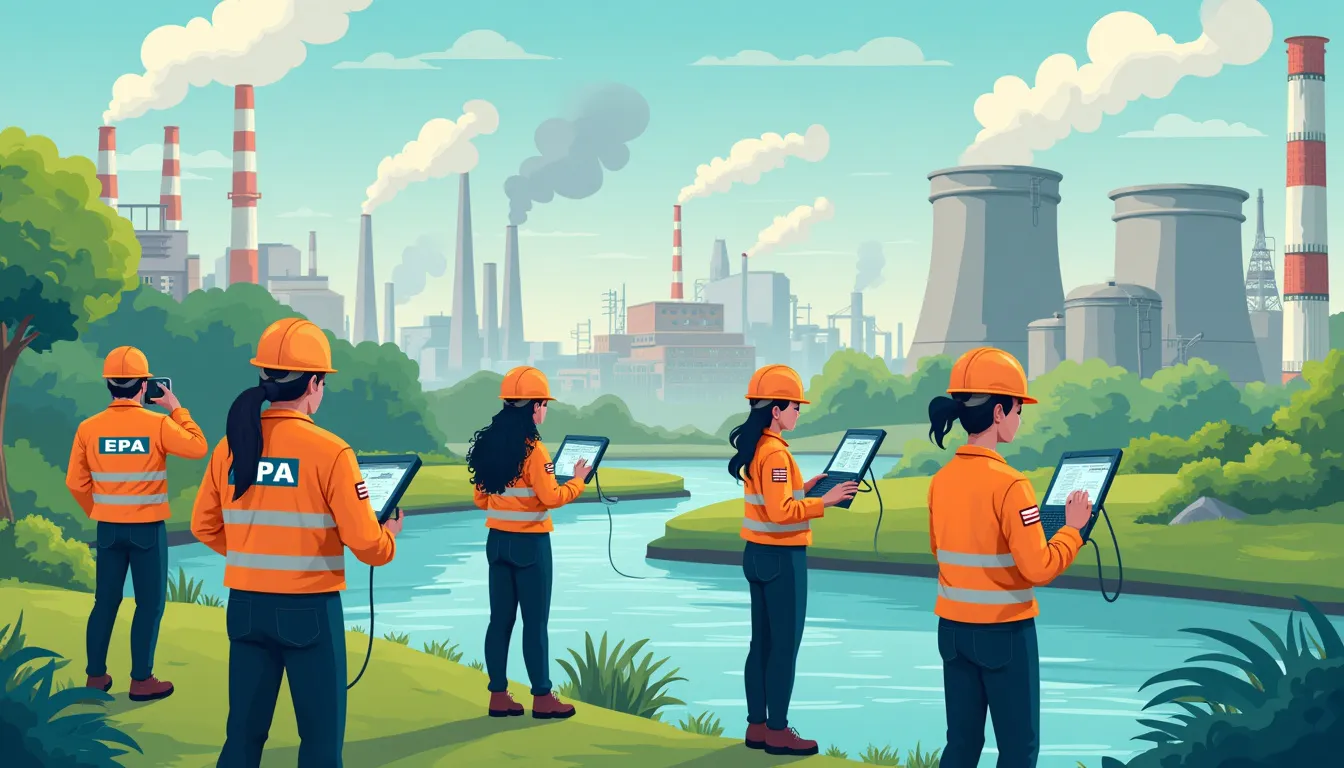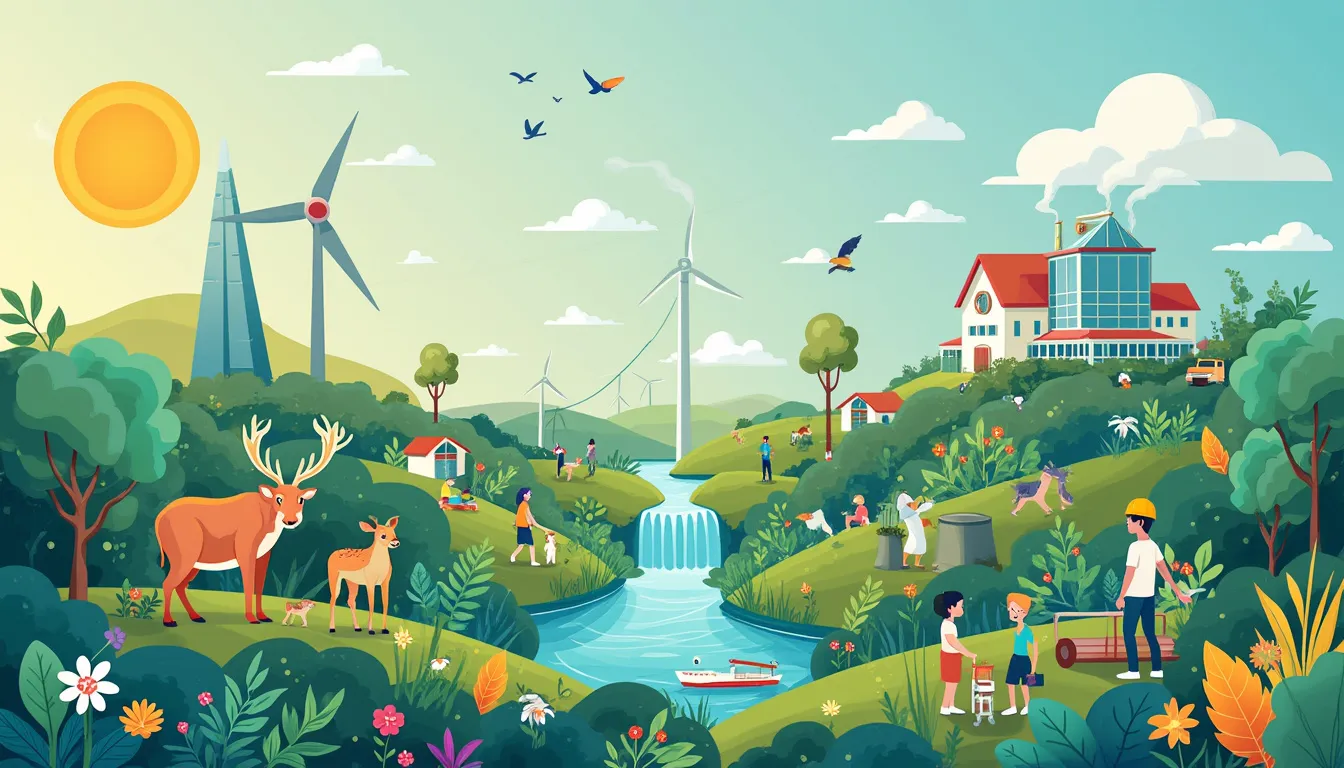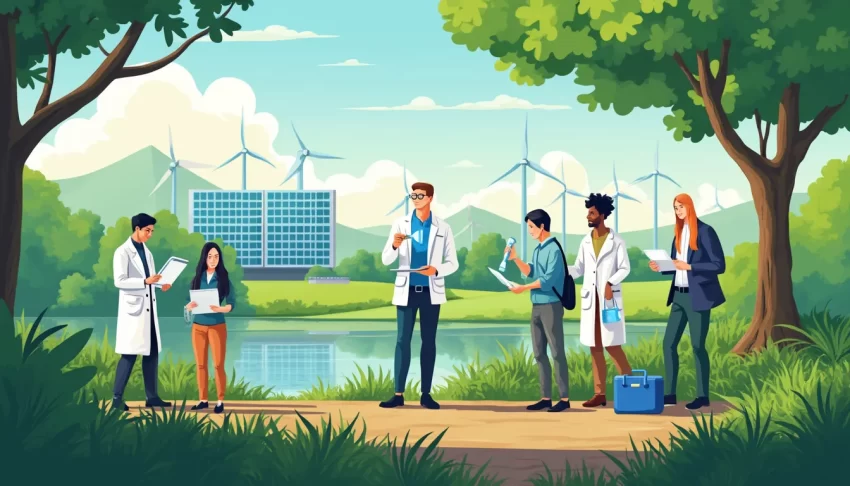In today’s rapidly changing world, the role of the Environment Protection Authority (EPA) has never been more critical. As we face unprecedented environmental challenges—from climate change to biodiversity loss—the need for vigilant and effective environmental stewardship is paramount. But what exactly is the Environment Protection Authority, and why is it so essential to our global efforts in environmental conservation?
The Environment Protection Authority, commonly known as the EPA, is a vital governmental body tasked with safeguarding our natural resources and ensuring a sustainable future for generations to come. Established in response to growing environmental concerns, the EPA has evolved into a linchpin of environmental policy and regulation, wielding significant influence over how countries address and mitigate environmental impacts.
Since its inception, the EPA’s mission has been clear: to protect human health and the environment. This mandate encompasses a broad spectrum of responsibilities, from crafting and enforcing environmental laws to monitoring pollution levels and addressing environmental hazards. By setting and upholding stringent standards, the EPA plays a crucial role in preventing environmental degradation, promoting sustainable practices, and fostering a healthier planet.
Understanding the importance of the EPA extends beyond mere regulatory functions; it involves recognizing the immense value of the initiatives and programs spearheaded by the agency. From groundbreaking efforts to reduce air and water pollution to innovative partnerships aimed at conserving natural habitats, the EPA’s work is both expansive and impactful. These efforts not only help protect the environment but also drive economic benefits, such as creating green jobs and enhancing community well-being.
As we delve deeper into the EPA’s key responsibilities, major initiatives, and the challenges it faces, it becomes evident that the agency’s work is foundational to our collective environmental resilience. For individuals and business owners alike, understanding and supporting the EPA’s mission is not just an option—it’s an imperative. Let’s explore how the Environment Protection Authority continues to shape a sustainable future and what steps we can take to bolster its efforts in our daily lives and business practices.
Introduction to the Environment Protection Authority
Definition of the Environment Protection Authority (EPA)
The Environment Protection Authority (EPA) is a critical regulatory body responsible for the creation and enforcement of environmental policies aimed at protecting natural resources and public health. Established with a mission to safeguard air, water, and soil from pollution and degradation, the EPA operates at both federal and state levels in various countries. This organization sets standards, conducts research, and ensures compliance with environmental laws, playing a pivotal role in fostering sustainable development.
Brief History and Establishment of the EPA
The origins of the Environment Protection Authority can be traced back to the growing environmental awareness of the late 20th century. In the United States, the EPA was formally established on December 2, 1970, during the Nixon administration. This move was partly in response to the mounting public demand for cleaner air and water, catalyzed by several high-profile environmental disasters, such as the Santa Barbara oil spill in 1969 and the burning of the Cuyahoga River in 1969.
Prior to the creation of the EPA, environmental responsibilities were scattered across various governmental agencies, resulting in fragmented and often ineffective regulation. The establishment of the EPA consolidated these duties under one authority, streamlining efforts to address environmental issues more holistically. Similarly, other nations followed suit, recognizing the need for a dedicated agency to tackle environmental challenges comprehensively.
Importance of the EPA in Environmental Conservation
The importance of the Environment Protection Authority in environmental conservation cannot be overstated. Here’s why:
- Regulatory Oversight: The EPA sets and enforces regulations that limit the amount of pollutants industries and other entities can release into the environment. This helps maintain air and water quality, ensuring they are safe for human and ecological health.
- Public Health Protection: By controlling pollution, the EPA significantly mitigates health risks associated with environmental hazards. For example, reductions in air pollutants have been linked to decreases in respiratory illnesses and other health issues.
- Research and Education: Another vital role of the EPA is to conduct research on environmental issues and disseminate information to the public. This includes publishing reports, guidelines, and educational materials to promote environmental stewardship.
- Policy Development: Through its research and insights, the EPA informs and influences environmental policies. This includes working with lawmakers to develop more stringent environmental regulations and policies aimed at conserving natural resources.
- Emergency Response: The EPA plays a critical role in responding to environmental emergencies, such as chemical spills and natural disasters. This involves coordinating cleanup efforts and mitigating ecological damage.
The EPA’s multifaceted role underscores its significance in ensuring a sustainable and healthy environment for current and future generations. By regulating pollutants, conducting vital research, and fostering public awareness, the EPA helps create a balanced approach to development and conservation.
In short, the Environment Protection Authority is more than just a regulatory body; it is a cornerstone of environmental stewardship. Its establishment marked a significant turning point in our collective response to environmental challenges, and its ongoing efforts continue to be indispensable in the fight against pollution and climate change.
Understanding the origins, functions, and significance of the Environment Protection Authority provides a foundational knowledge that highlights its relevance in both historical and contemporary contexts. As we delve deeper into the specific responsibilities and initiatives of the EPA, it becomes clear that its impact touches nearly every aspect of our interaction with the environment.

Key Responsibilities of the Environment Protection Authority
Regulatory Oversight and Policy-Making Functions
The Environment Protection Authority (EPA) holds a crucial role in the development and implementation of environmental policies. At its core, the EPA’s mission is to safeguard natural resources and ensure sustainable development. The agency accomplishes this by establishing regulations that industrial and commercial entities must follow to minimize their environmental impact. These regulations are designed based on scientific research, public health data, and ecological studies, which collectively inform the rationale and necessity behind various environmental laws.
Regulatory oversight encompasses numerous aspects, from water quality management to air pollution controls. For example, the EPA sets standards for emissions from factories and vehicles, ensuring they stay within safe limits to protect public health and the ecosystem. Without these regulations, unchecked industrial activity could lead to significant environmental degradation, affecting everything from wildlife habitats to human health.
The policy-making function of the EPA is also proactive, anticipating future environmental challenges and setting long-term goals. One notable initiative is the promotion of renewable energy sources, which not only helps mitigate climate change but also leads to the conservation of non-renewable resources. By imposing regulations that limit carbon emissions and encouraging cleaner energy alternatives, the EPA drives innovation and progress in sustainable practices.
Enforcement of Environmental Laws and Regulations
Regulations and policies mean little without proper enforcement. The EPA plays a vital role in ensuring compliance with environmental laws through monitoring, inspections, and penalties. Enforcement mechanisms are designed to be both preventive and corrective, aiming to discourage violations and rectify any harm caused by non-compliance.
One effective method of enforcement is regular inspections and audits of facilities that pose potential environmental risks. For instance, chemical plants and waste disposal sites are subject to stringent EPA evaluations to ensure they adhere to safety and environmental guidelines. If a violation is discovered, the EPA has the authority to impose fines or mandate corrective actions.
An example of the EPA’s enforcement power is the landmark case against the Volkswagen Group in 2015, where the automaker was found to be intentionally programming diesel vehicles to emit lower levels of emissions during testing than in real-world conditions. The EPA’s intervention led to hefty fines and a massive recall, showcasing its pivotal role in upholding environmental integrity.
Moreover, the EPA collaborates with state and local agencies to broaden its enforcement reach, ensuring that laws are uniformly applied across regions. This multi-tiered approach strengthens the overall environmental protection framework, creating a collaborative effort to maintain ecological balance.
Monitoring and Addressing Pollution and Environmental Hazards
Another essential responsibility of the Environment Protection Authority is vigilant monitoring and addressing of pollution and environmental hazards. The EPA operates extensive networks to track air and water quality, hazardous waste, and other forms of pollution. These monitoring systems are critical for detecting harmful levels of contaminants and implementing prompt measures to mitigate their impact.
Air quality monitoring, for example, involves various technologies and methodologies, such as satellite observations, ground-based sensors, and even community reports. The EPA uses the collected data to assess pollution trends, identify hotspots, and inform the public during heightened pollution events. Air Quality Index (AQI) reports are a familiar tool used by the EPA to communicate daily pollution levels, helping individuals make informed decisions about outdoor activities, especially those with respiratory conditions.
Similarly, in the realm of water quality, the EPA sets standards under the Clean Water Act, ensuring that bodies of water are safe for recreation, drinking, and supporting aquatic life. Monitoring efforts include sampling rivers, lakes, and groundwater sources to detect pollutants that can harm ecosystems or pose health risks to humans and animals.
Addressing environmental hazards goes beyond monitoring; it involves active remediation efforts. The EPA’s Superfund program, for instance, is dedicated to cleaning up contaminated land and responding to environmental emergencies. This initiative has successfully reclaimed numerous toxic sites, making them safe for communities and wildlife.
A real-world example of EPA’s swift action is the containment and cleanup efforts following the Deepwater Horizon oil spill in 2010. The agency coordinated with multiple organizations to mitigate the spill’s impact on marine life and coastal communities, demonstrating its critical role in emergency response.
In summary, the key responsibilities of the Environment Protection Authority—regulatory oversight and policy-making, enforcement of laws and regulations, and monitoring and addressing environmental hazards—form the backbone of its mission to protect and enhance the quality of our natural environment. By staying vigilant and proactive, the EPA ensures that environmental protection remains a priority for both present and future generations.

Major Initiatives and Programs Led by the Environment Protection Authority
When we hear about the Environment Protection Authority, the image that might come to mind is a bureaucratic institution bogged down with paperwork and regulations. However, the reality is that the EPA is a dynamic and pivotal player in the fight against environmental degradation. This section delves into some of the remarkable initiatives and programs spearheaded by the EPA, many of which have yielded transformative results not just in the United States but globally.
Overview of Significant EPA-led Programs and Initiates
The EPA’s portfolio is diverse, incorporating numerous programs aimed at various aspects of environmental protection. A prime example is the Clean Air Act, a landmark legislative initiative designed to control air pollution on a national level. Through amendments over the years, this law has been instrumental in reducing air pollutants, thus improving public health and environmental quality.
Another cornerstone initiative is the Superfund Program, which targets contaminated lands. This program has not only facilitated the clean-up of hazardous waste sites but also contributed to the economic redevelopment of previously abandoned areas. The EPA estimates that as of 2021, more than $43.6 billion in property values have been generated in areas surrounding Superfund sites.
Success Stories and Impactful Projects
The EPA has numerous success stories to its name, but one that stands out is the revitalization of the Chesapeake Bay. Once plagued by pollution, this vital ecosystem has seen significant recovery efforts thanks to the EPA-led Chesapeake Bay Program. Through stringent regulatory measures, community engagement, and robust scientific research, the health of the bay has improved markedly, showcasing what can be achieved through concerted efforts.
Another noteworthy project is the Green Chemistry Program. Launched in the 1990s, this initiative promotes the design of chemical products that reduce or eliminate hazardous substances in their development and use. By investing in green chemistry, the EPA has not only made manufacturing processes safer but also propelled technological innovations that pave the way for sustainable industrial growth.
Then there’s the story of the WaterSense Program, a voluntary partnership program which taps into the importance of water efficiency. Products that earn the WaterSense label are certified to save water, energy, and money. Since the program’s inception in 2006, WaterSense has helped consumers save more than 4.4 trillion gallons of water and $87 billion in water and energy bills.
Partnerships with Other Organizations for Environmental Protection
The EPA’s reach and effectiveness are significantly amplified through partnerships with various organizations. For example, the agency frequently collaborates with the United Nations Environment Programme (UNEP) to tackle global environmental issues. Together, they have worked on numerous initiatives such as reducing environmental pollutants and advancing sustainable development goals.
In the private sector, the Climate Leadership Awards program, co-sponsored by the EPA, encourages corporations to go above and beyond in their efforts to combat climate change. By recognizing and rewarding companies that adopt extensive sustainability measures, the EPA fosters a competitive environment where eco-friendly practices are not just an ethical responsibility but a business imperative.
Another successful collaboration is with state and local governments through the Environmental Justice Small Grants Program. This initiative supports projects that aim to address environmental justice issues in disadvantaged communities, ensuring that all populations, particularly those historically overlooked, have a voice in environmental decision-making.
Lastly, the EPA excels in fostering academic partnerships, funding research that informs policy and practice. These collaborations with universities and research institutions result in a continuous influx of cutting-edge scientific data and innovative solutions, thereby staying ahead of the curve in environmental protection efforts.
The Ripple Effect: Broader Impacts and Inspirations
The ripple effect of the EPA’s initiatives extends far beyond immediate environmental gains. For instance, community-based projects like the renovation of brownfield sites—underutilized properties where redevelopment is complicated by possible contamination—have economic, social, and cultural impacts. Cleanup and reuse turn these sites into community assets, contributing to urban revitalization and boosting local economies.
Moreover, programs that promote sustainable practices often lead to educational opportunities. Schools and community organizations involved in EPA-led initiatives frequently incorporate learnings into their curricula, thus fostering a new generation of environmentally conscious citizens. Youth engagement is particularly inspiring, as it empowers young individuals to contribute actively to environmental conservation efforts.
In business contexts, EPA initiatives often serve as catalysts for innovation. The push for green technologies has led to the emergence of startups and the reorientation of established companies towards sustainable practices. Innovations like biodegradable materials, renewable energy solutions, and efficient waste management systems often trace their genesis back to EPA programs.
By spearheading a diverse range of initiatives and forming strategic partnerships, the Environment Protection Authority continues to play an indispensable role in safeguarding our planet. Through successful projects and inspiring collaborations, the EPA not only addresses immediate environmental concerns but also lays the groundwork for a sustainable future. Whether it’s cleaning up a local waterway, promoting energy-efficient products, or funding groundbreaking research, the ripple effects of their work underscore the far-reaching impact of concerted environmental stewardship.

Challenges and Future Directions for the Environment Protection Authority
Current Challenges Faced by the EPA
The Environment Protection Authority (EPA) has been at the forefront of ensuring our environment remains safe and sustainable, but it isn’t without its challenges. One of the primary challenges is the balancing act between economic growth and environmental protection. Industries often push for lenient regulations to boost economic activities, sometimes at the expense of environmental health. This puts the EPA in a tough spot, as it must enforce regulations without stifling economic progress.
Another significant hurdle is the ever-evolving nature of environmental threats. Issues like climate change, plastic pollution, and emerging contaminants such as microplastics and pharmaceuticals in water supplies require the EPA to stay ahead of the curve. Given these dynamic challenges, the EPA must constantly adapt its strategies, regulations, and technologies to address new and unforeseen environmental hazards effectively.
Financial constraints also pose a substantial challenge. Budget cuts and limited funding can impede the EPA’s ability to operate efficiently. With diminished resources, the ability to conduct comprehensive environmental assessments, enforce regulations, and implement new initiatives can be significantly hindered.
Lastly, public perception and political influence can impact the EPA’s work. The agency often faces criticism and pushback from various stakeholders, ranging from industry lobbyists to local communities. Navigating these social and political landscapes requires resilience and effective communication strategies to maintain public trust and accurately convey the importance of environmental policies.
Innovations and Technological Advancements in Environmental Protection
Despite these challenges, the EPA continues to leverage technological innovations to enhance its effectiveness. One revolutionary advancement is the use of Artificial Intelligence (AI) and machine learning. These technologies allow the EPA to predict environmental changes more accurately, optimize resource allocation, and improve data analysis for monitoring environmental conditions.
Drones and satellite imaging represent another frontier. These tools provide real-time data on geographic and environmental changes, enabling more precise tracking of deforestation, soil erosion, and water pollution. The insights gained from these technologies inform the development of more targeted and effective intervention strategies.
Furthermore, advancements in clean energy technologies are integral to the EPA’s mission. The agency actively promotes the adoption of renewable energy sources such as solar, wind, and bioenergy. These technologies not only reduce greenhouse gas emissions but also decrease reliance on fossil fuels, aligning with the EPA’s goal of mitigating climate change impacts.
Moreover, the EPA is exploring innovative waste management solutions. Technologies like anaerobic digestion and advanced recycling techniques contribute significantly to reducing waste and promoting circular economy principles. By transforming waste into valuable resources, the EPA helps minimize environmental impact and fosters sustainable practices.
Future Goals and Strategic Plans for the EPA to Enhance Its Effectiveness
Looking ahead, the EPA has outlined several strategic goals to bolster its effectiveness in environmental protection. A key priority is enhancing public engagement and education. By fostering a well-informed and proactive citizenry, the EPA aims to cultivate a collective endeavor towards sustainability. Initiatives like community workshops, educational campaigns, and partnerships with educational institutions are pivotal in achieving this goal.
The EPA also plans to strengthen its regulatory framework. This involves updating existing regulations to reflect the latest scientific findings and environmental conditions. It also includes developing new regulations to address emerging environmental threats. The EPA’s focus is on creating a more adaptive and responsive regulatory environment that can promptly tackle contemporary environmental challenges.
Strengthening collaborations is another cornerstone of the EPA’s future strategies. By partnering with local governments, international organizations, private sectors, and non-profits, the EPA can mobilize a wider array of resources and expertise. Such collaborations are essential for addressing global issues like climate change, which require concerted efforts beyond national borders.
Moreover, the agency is set to prioritize environmental justice. Historically marginalized communities often bear the brunt of environmental degradation. The EPA is committed to ensuring that all communities have access to clean air, water, and land, and are not disproportionately affected by environmental hazards. This involves developing policies specifically aimed at mitigating environmental inequalities and promoting equitable access to natural resources.
Lastly, the EPA seeks to enhance its data-driven decision-making processes. By investing in advanced data analytics and integrating big data technologies, the EPA can improve its environmental monitoring and assessment capabilities. This approach enables more informed policy-making, ensuring that interventions are both effective and efficient.
In conclusion, while the EPA faces considerable challenges, its commitment to leveraging innovations, strengthening public engagement, and enhancing regulatory frameworks positions it to continue playing a pivotal role in environmental protection. Through these efforts, the EPA not only addresses current environmental issues but also lays the groundwork for a sustainable and resilient future.
In conclusion, the Environment Protection Authority (EPA) stands as a cornerstone in our collective effort to safeguard the environment. Formed with the mission to regulate, enforce, and inspire, the EPA’s role has evolved significantly since its inception. Its robust regulatory oversight and policy-making functions have been instrumental in establishing standards that ensure our air, water, and soil remain clean and safe. By rigorously enforcing environmental laws, the EPA holds individuals, businesses, and even itself accountable, maintaining an unwavering commitment to public health and ecological integrity.
The numerous initiatives spearheaded by the EPA offer a testament to its proactive stance on tackling environmental issues. From groundbreaking programs like the Clean Air Act to successful projects targeting hazardous waste management, the EPA has demonstrated a persistent dedication to creating positive environmental outcomes. These successes are often amplified through strategic partnerships with other governmental bodies, non-profits, and private sectors, showcasing a collaborative approach that underscores the complex, interconnected nature of environmental stewardship.
However, the path to environmental protection is fraught with challenges. Rapid industrialization, climate change, and emerging pollutants present significant hurdles that require innovative solutions. Thankfully, the EPA is not stagnant; it continuously embraces technological advancements and new methodologies to tackle these evolving threats. As it looks to the future, the EPA’s strategic plans emphasize greater efficiency, transparency, and community engagement, ensuring it remains resilient and adaptive in its mission.
For individuals and business owners alike, understanding the critical role of the Environment Protection Authority can inspire actionable change. Simple daily practices, like reducing waste, conserving energy, or supporting green initiatives, can collectively bolster the EPA’s efforts. At the business level, adopting sustainable practices and complying with environmental regulations not only helps protect the planet but also fosters a positive corporate image and can lead to financial benefits.
In essence, the EPA’s work is a stark reminder that protecting our environment is an ongoing and shared responsibility. By staying informed, supporting relevant policies, and implementing sustainable practices, we all contribute to a healthier, more sustainable future. Let’s embrace this journey with the EPA as our steadfast ally, ensuring that the vital resources we enjoy today will be preserved for generations to come.
Support Us: Check out our recommended products on Amazon.

